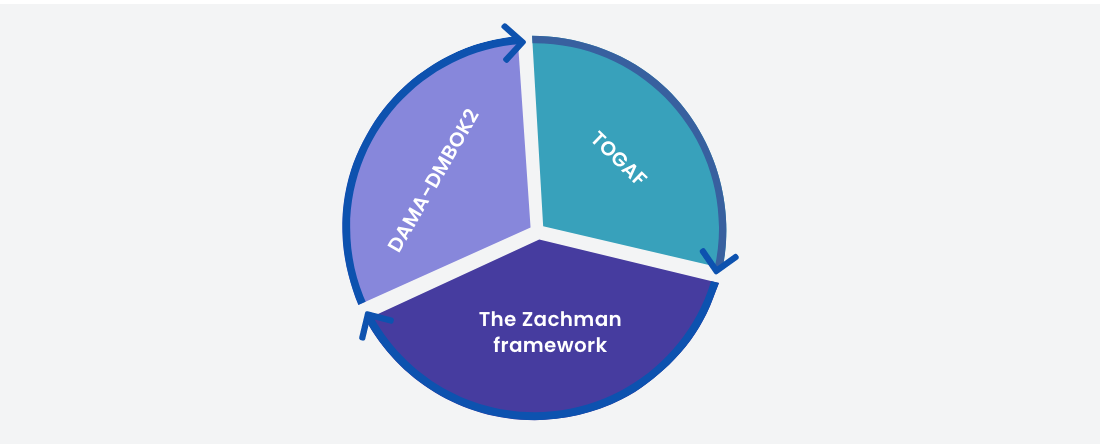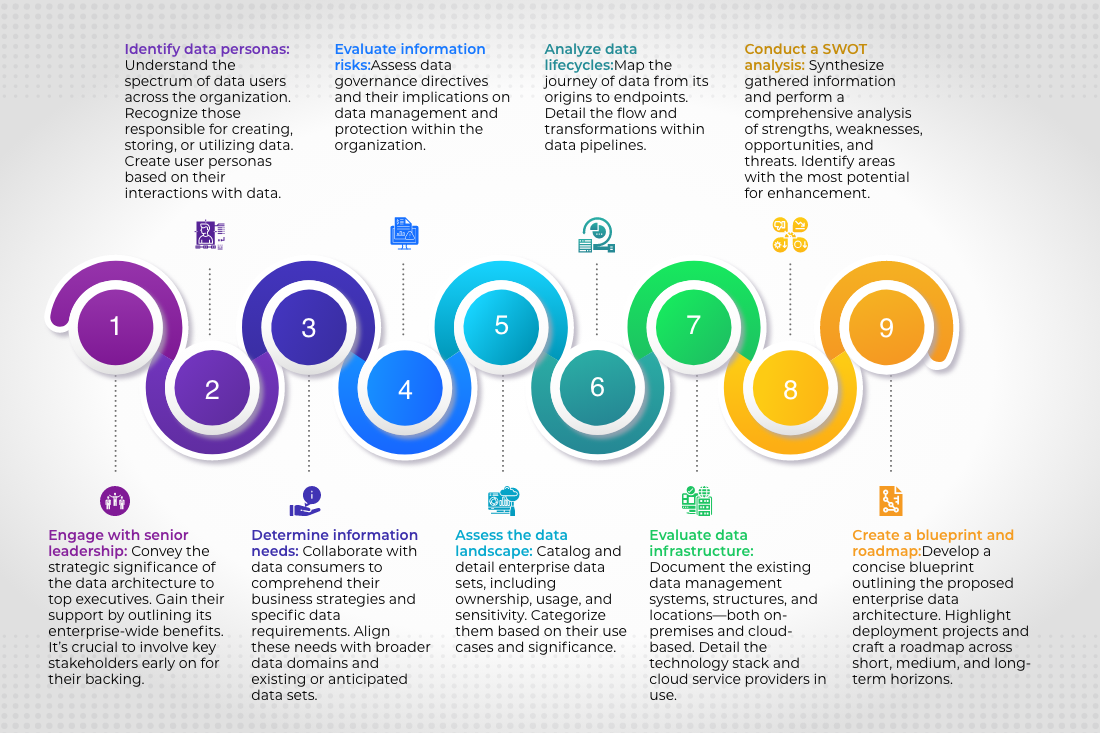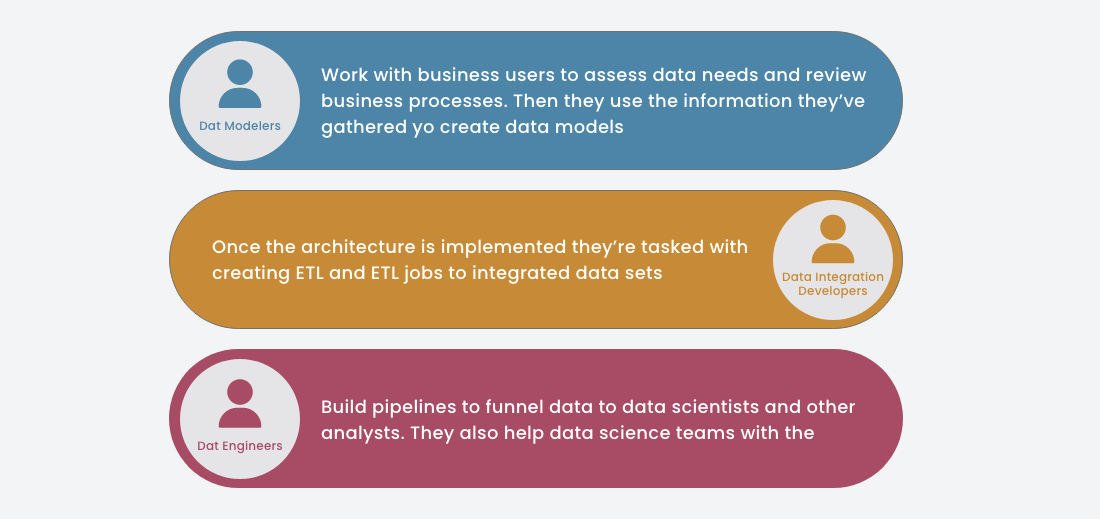Harnessing data's potential: The role of architecture
Published January 05, 2024. 5 min read
In today’s digital era, data is frequently likened to oil due to its immense value. It fuels contemporary businesses and informs decision-making processes. However, unlike oil, data is a renewable resource that expands with every interaction, transaction, and engagement we make. This realization has given birth to the concept of “Data as a Product”. In this blog post, we delve into the integral role of data architecture in shaping and refining data as a product.
Understanding Data as a Product
The concept of Data as a Product (DaaP) revolutionizes the way we perceive data. It’s not merely a byproduct of business operations anymore, but a standalone product that delivers value to its consumers. These consumers could range from internal stakeholders and external clients to machine learning algorithms. The true value lies in the insights extracted from the data, which can steer strategic decisions, streamline operations, and generate new revenue streams. For instance, consider a retail company that views its sales data as a product. This data product could be leveraged by the marketing team to gain insights into customer behavior, by the finance team to forecast revenue, or by the supply chain team to manage inventory effectively.
Data architecture
In today's digital landscape, data reigns supreme, serving as the heartbeat of modern businesses. The way data is organized, handled, and leveraged becomes the cornerstone of an organization's triumph. Enter data architecture principles – these principles serve as beacons guiding the blueprint and functionality of data systems within businesses, ensuring their strength, efficiency, and alignment with overarching objectives.Let’s explore the key principles that underpin a strong data architecture:
- Scalability: Picture this: your data grows exponentially. Scalability ensures your systems can handle this growth seamlessly. Think distributed databases or cloud-based solutions that expand effortlessly as your data expands, without compromising on performance.
- Data quality: Garbage in, garbage out – a familiar adage in the data realm. Maintaining high-quality data is pivotal. It involves constant checks, validations, and governance to ensure accuracy, completeness, and reliability.
- Accessibility and security: Balancing access and security is critical. You want authorized users to access data easily while fortifying your systems against breaches. Encryption, access controls, and robust authentication mechanisms play vital roles here.
- Interoperability: Your systems need to speak the same language. Interoperability ensures seamless data exchange between different platforms and applications, achieved through standardized formats and APIs.
- Flexibility and agility: Business landscapes change, and so should your data architecture. Being agile and adaptable allows quick responses to evolving needs. Modular designs and agile methodologies are your allies here.
- Data governance: It's like the rulebook for your data. Establishing policies, standards, and stewardship practices ensures compliance with regulations and internal protocols, safeguarding your data's integrity.
- Performance optimization: Speed matters. Optimizing architectures with indexing strategies, caching mechanisms, and performance tuning enhances query speeds and overall system responsiveness.
- Cost efficiency: The smart use of resources and leveraging cost-effective storage solutions – these define cost-efficient data architectures. Cloud solutions often offer scalability and cost benefits, allowing businesses to scale and pay for resources as needed.
- Alignment with business goals: Data initiatives must sync with business objectives. They should contribute to value creation, be it through improving decision-making or enhancing customer experiences.
- Documentation and collaboration: Clear documentation ensures everyone's on the same page. Encouraging collaboration among teams fosters efficiency and knowledge sharing, even amidst transitions.
The crucial role of data architecture
Data architecture is the backbone of the DaaP model. It lays out the blueprint for managing, storing, and delivering data as a product. Let’s explore some key areas where data architecture plays a pivotal role:
- Data governance: Data governance policies are the safeguards that ensure the quality, reliability, and security of the data. They dictate who can access the data, how it’s classified, and how it’s protected. A robust data governance policy is indispensable for preserving the integrity of the data product. For example, a healthcare company might have stringent data governance policies in place to comply with regulations like HIPAA. These policies would govern how patient data is stored, who can access it, and how it’s safeguarded.
- Data integration: Data integration is the process of amalgamating data from disparate sources into a unified view. This is crucial for providing a comprehensive view of the data product and ensuring that it delivers meaningful insights. An example of data integration could be a multinational corporation that combines sales data from different regions. The integrated data product would provide a global view of sales performance, enabling the company to make informed decisions.
- Data storage and management: The choice of data storage and management systems directly influences the performance, scalability, and cost-effectiveness of the data product. The data architecture must take into account factors like data volume, velocity, and variety when selecting the right storage and management solutions. For instance, a tech startup dealing with large volumes of real-time data might opt for a NoSQL database for its data product. This would enable the startup to handle the velocity and variety of its data efficiently.
- Data delivery: Data delivery mechanisms determine how the data product is consumed. This could be through APIs, reports, dashboards, or data feeds. The data architecture must ensure that the delivery mechanisms are reliable, efficient, and cater to the needs of the data consumers. As an example, a financial services firm might deliver its data product through an API. This would allow internal analysts and external clients to access real-time financial data, thereby enhancing their decision-making capabilities.
Exploring data architecture frameworks: DAMA-DMBOK2, TOGAF, and The Zachman Framework
Data frameworks are essentially structured methodologies that guide how data is collected, stored, managed, and used within an organization. They include a set of standards, guidelines, protocols, processes, and rules that enable organizations to manage their data effectively.For instance, consider a multinational corporation dealing with vast amounts of data. A data framework in this context would provide a structured approach to handle data from various sources, ensuring it’s effectively managed, processed, and utilized.

- DAMA-DMBOK2: The Data Management Body of Knowledge (DAMA-DMBOK2) is a comprehensive framework that provides detailed guidelines for every aspect of data management. It covers a wide range of topics, including data governance, data architecture, data quality, data operations, and more.
- TOGAF: The Open Group Architecture Framework (TOGAF) is a robust framework that provides a detailed methodology for developing enterprise architectures. It covers various aspects of architecture, including business architecture, data architecture, application architecture, and technology architecture. For example, under data architecture, TOGAF provides guidelines for defining data entities, designing data models, and managing data integrity. It also provides guidelines for integrating data across different systems and platforms.
- The Zachman framework: The Zachman Framework is a unique enterprise ontology that provides a structured way of viewing an enterprise and its information systems. It consists of a matrix with six rows (representing different perspectives) and six columns (representing different aspects of the enterprise). For instance, the first row represents the business perspective and includes aspects like business goals, business processes, and business locations. The second row represents the system perspective and includes aspects like system functions, system data, and system networks.
Essential guidelines for building a data architecture
To ensure a robust data architecture aligns with business strategies and user needs, data management teams must collaborate closely with business leaders and end-users. Within the nine vital steps for planning data architecture, here's the structured approach for crafting a comprehensive enterprise data architecture:

The different roles in data architecture design and development
In the realm of data architecture design and development, a spectrum of pivotal roles collaborates synergistically to craft and maintain robust data systems. The Data Architect leads the charge, orchestrating the blueprint for data structures, while Data Engineers focus on building and optimizing pipelines. Database Administrators ensure database efficiency and security, while Data Analysts extract insights for decision-making. Data Governance Managers oversee compliance and standards, and Solution Architects integrate data components into larger systems. Enterprise Architects align data architecture with business goals, and Data Scientists leverage analytics for predictive modeling. Metadata Managers handle metadata repositories, and Data Stewards ensure responsible data management, collectively forming a dynamic ensemble driving effective data solutions.

To bring it all together
The evolution of data from a mere byproduct to a valuable product, known as Data as a Product (DaaP), drives strategic decisions and operational efficiency. Central to its success is robust data architecture, shaping and managing data as a valuable asset. Key principles, from scalability to alignment with business goals, form the core of this architecture, supported by frameworks like DAMA-DMBOK2, TOGAF, and The Zachman Framework. Crafting an enterprise data architecture involves strategic planning and stakeholder collaboration. The convergence of diverse roles—architects, engineers, analysts, and stewards—is vital for effective data solutions. This synergy enables the harnessing of data's true potential, fostering informed decision-making and growth in today's data-driven landscape.
.png)